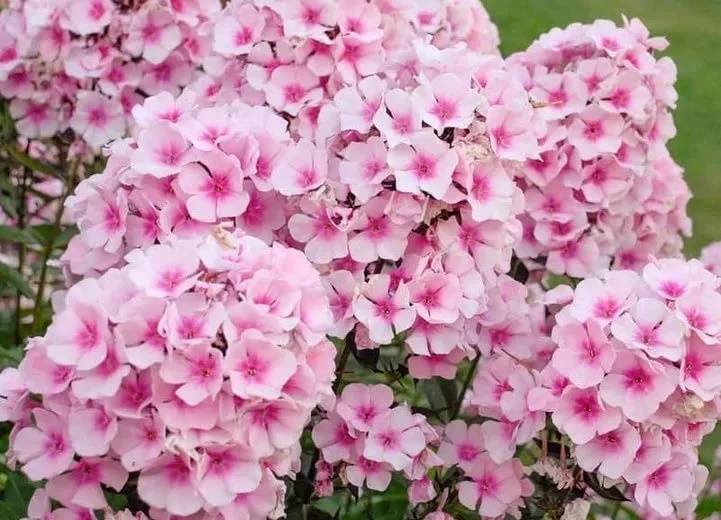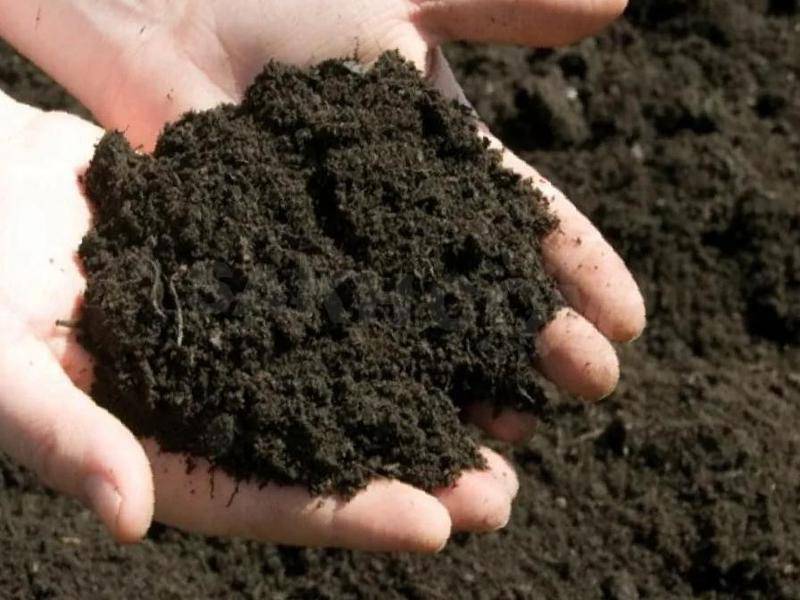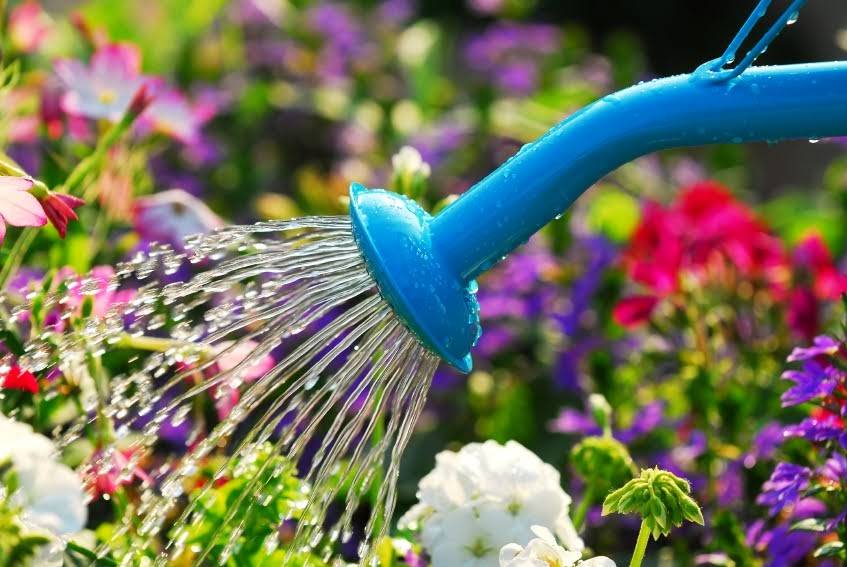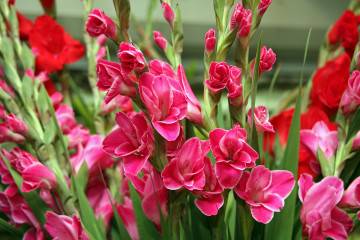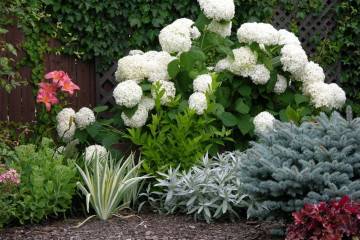How to feed phlox in June before flowering?
Content:
Phlox are perennial plants, bright inflorescences amaze with a variety of shapes and shades. These flowers are rightfully the record holders for the duration of flowering and winter hardiness. They are an invariable attribute of any garden, creating a background and mood.
Fertilizing phlox: when is it better to do it
Fertilizing phlox should correspond to the developmental phases of shrubs. The growing season is divided into three stages:
- Rapid growth and development when plants need nitrogen and water.
- Bud formation and flowering. The need for nitrogen decreases, the need for potassium and phosphorus increases.
- End of flowering and seed ripening. Beneficial substances accumulate in the seeds and root system. We need phosphorus.
How phlox are fed in spring and summer
The traditional way: liquid or dry fertilizers are applied to the root growth zone. Then the flowers are watered.
Foliar dressing is usually done using a sprayer or a watering can over the leaves. Doses of the components used are taken small.
Terms and rules for applying dressings for phlox
Only if the rules and terms of feeding are observed, phloxes will bloom brightly and continuously.
Fertilization stages:
- The first time the plant is fed with a complex preparation after the snow melts and the shoots appear. At the same time, they loosen and mulch the soil with compost, sand or chopped grass. The mulch layer is 3 cm.
- The second time is fed at the end of spring. Use a mullein with ash (1:10) or an additive "Kemira universal" (8 ml per 10 liters of water). Complex fertilizers can be applied in accordance with the instructions.
- The early varieties are fertilized a third time in mid-June, the late ones at the end with a urea solution. You can use foliar dressing.
- At the beginning of July, the fourth feeding is carried out. In this crucial period, complex preparations with trace elements and superphosphate are used.
In addition, at the end of July, fertilizers are applied for the fifth time, and in mid-August for the sixth.
Root liquid fertilizer is given after watering. Next, the bush is washed with plain water in order to prevent cracking of the stems.
An overdose of the drug should not be allowed: the flowers become loose, the stems crack. A lack of food leads to a decrease in inflorescences, deterioration of color and a decrease in flowering time.
How to feed phlox when planting
At the first stage, the soil is enriched with humus and rotted compost. A compost bucket is used per square meter of land. In addition, 50 g of superphosphate, 200 g of wood ash, and bone meal (100 g) are added to the planting hole.
For acidic soil, lime is used. Up to 200 g of fluff are taken per meter of soil. Two buckets of sand are added to the heavy soil.
When planting phloxes, complex mineral fertilizers are added (15 ml per well).
How can phlox be fed before and during flowering?
Top dressing of phlox in the spring and summer is needed for lush flowering. Usually used for every sq. M. such fertilizer: 60 g of ash and superphosphate and 30 g of ammonium nitrate.
During the spring period of intensive growth and development, plants need nitrogen and water.
How can you feed phloxes in June during the laying of buds:
- infusion of mullein or horse manure;
- chicken droppings;
- slurry;
- infusion of nettle.
If there are no such fertilizers, then phloxes are watered in spring and summer with a solution of nitrate for 10 liters of 30 g. This is enough for 1 square meter.
During flowering, in July, another fertilization is carried out. At this time, a solution of 10 g of potassium sulfate in a bucket of water is often used. Top dressing with potassium will enhance the color of flowers. Ash can be added (1 glass per 10 liters of water).
Also commonly used:
- chicken manure with potassium sulfate and superphosphate (20 g each);
- organic preparation "Flower".
The better to fertilize phlox in the fall
Preparation for wintering ends in autumn. Shrubs are waiting for watering with diluted superphosphate and potassium sulfate. Each is taken in 15 ml. The product is diluted in 10 liters of water. This is enough for 1m2. Watering with such a composition will increase the number of flower buds laid in winter and protect the root system from frost.
Around the flowers, the earth is sprinkled with peat or compost, with the addition of 2 tbsp. spoons of phosphorus-potassium composition or the preparation "Autumn" for three bushes.
How to fertilize phlox when preparing for winter
Preparation begins in the middle of summer. How to water phlox correctly: you need to provide abundant watering, but without waterlogging, as the roots will begin to rot. Plants need phosphorus and potassium and can be fed with a solution of bone meal.
When frost begins, all shoots are cut off. This will protect the plant from diseases and insects. Miniature specimens are cut only to the middle of the stems. Pruning is completed before frost.
After fertilization, the soil is mulched with coniferous compost to protect it from frost.
Foliar dressing
The plant perfectly absorbs nutrients through the leaves. It is convenient to combine fertilizer spraying with fungicides and insecticides. This type of feeding should be used for shrubs over three years old.
Varieties of foliar dressing:
- Phosphoric dressings significantly increase the number of flowers on the main, as well as on the lateral stems, making their colors brighter. The flowering period increases.
- Nitrogen fertilizing makes the growth of shoots more active.
- Manganese acid potassium allows for an early and very bright flowering.
- Phosphorus-potassium dressing will help prolong the lush flowering.
Fertilizers for phlox
Fertilizers applied when planting phlox are very intensively consumed in the first year of growth. In this regard, organics and minerals are introduced every year.
Organic fertilizers
Organic matter is the main source of nitrogen, which is required at the stage of active growth of green mass.
Types of dressings:
- Mullein. Good for root dressing.1/3 of a bucket of semi-rotted manure is diluted with water, then mixed and diluted with three more buckets of water. Fresh manure must not be used! It causes root rot and death of the entire plant.
- Slurry. 1.5 liters of slurry is poured into 10 liters of water. This mixture is poured into the grooves around the bushes.
- Bird droppings. It is a good organic fertilizer. 1 kg of manure is mixed in 10 liters of water. Fertilizer is poured into the holes around the plants. 1.5 liters per 1 sq.
Mineral fertilizers for phlox
Trace elements improve flowering and protect against disease.
Nitrogen fertilizers accelerate the growth of shoots, make the foliage thick and increase the size of the inflorescences. They are introduced in spring and early summer. Urea is used (1 dessert spoon per 10 liters of water), ammonium nitrate, ammonium sulfate or compost.
Potash fertilizers are used during and after flowering. Potassium promotes the development of peduncles, increases the brightness of flowers, increases resistance to low temperatures in winter and disease resistance. Used: potassium salt, saltpeter, ash, potassium sulfate, sylvinite. Potassium nutrition can be applied 5 times for perennial phloxes and only 4 times for annuals. Combination with phosphorus increases the effect.
Boron and manganese. These trace elements are applied only once during the growing season. Shrubs are watered with boric acid (10 liters 3 g) and potassium permanganate (10 liters 0.2 g). One bucket is required per square.
Ash dressing
Ash is rich in potassium and phosphorus. Ash liquor is made from ash, which saturates the soil with microelements and destroys harmful larvae. For ten liters of water, 100 g of ash is taken. The components are thoroughly mixed. Liquid ash nourishes plants better.
Folk remedies
Nettle infusion serves as a nitrogen supplement. Nettles are cut, filled with water and covered. It is infused in a warm place until bubbles and a leavened smell appear. The infusion is diluted with water in a ratio of 1: 5.
Common mistakes when fertilizing phlox
The following mistakes should be avoided:
- Application of liquid fertilizers to dry soil. The plant or its roots can be burned with this approach. Better to add food after rain or watering.
- Foliar dressing immediately after rain. Leaves that are wet will not be able to absorb the beneficial additives.
- Application of nitrogen in autumn. This can provoke the growth of shoots.
- Organic application in the middle of autumn. May cause the kidneys to swell, leading to damage. In spring, phloxes will be weakened and there will be few inflorescences.
With a sufficient amount of nutrients, phloxes will decorate the landscape for up to eight years without transplanting, while retaining their decorative qualities. Each growing season is characterized by the need for a certain type of food. This should be borne in mind when caring for plantings.

